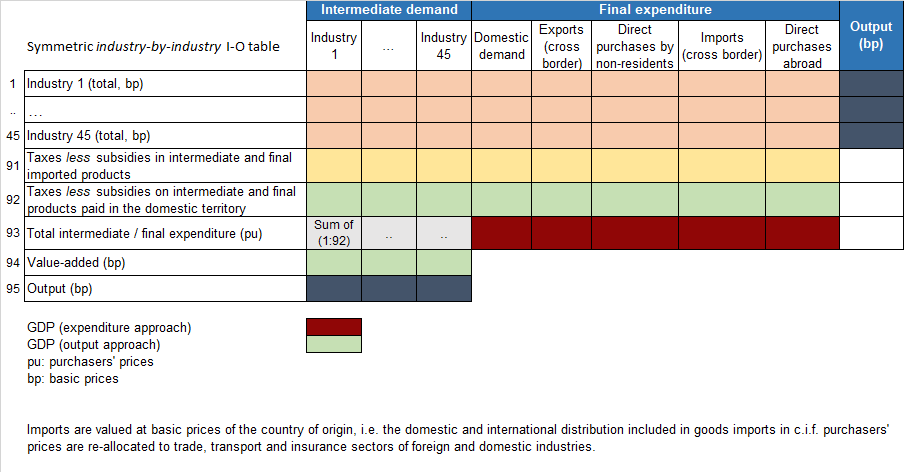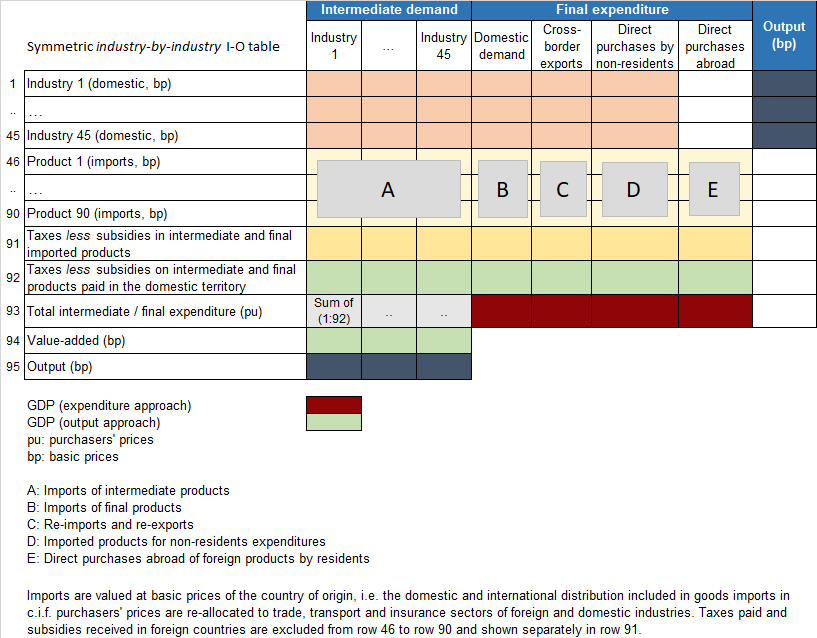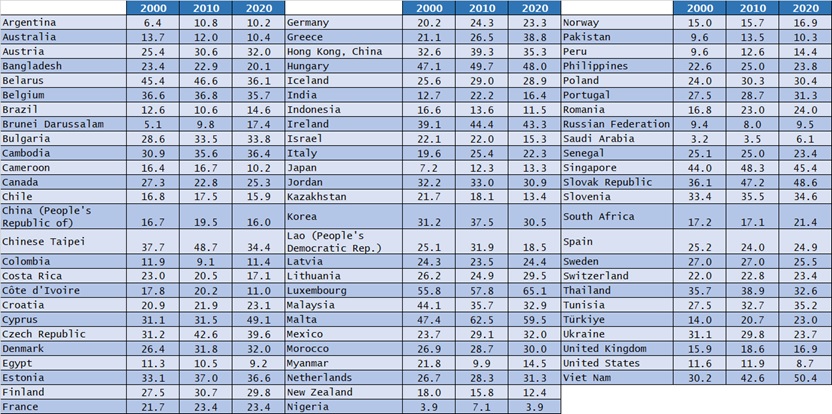Industry and globalisation
Input-Output Tables (IOTs)
Input-Output Tables (IOTs) describe the sale and purchase relationships between producers and consumers within an economy. They can either show flows of final and intermediate goods and services defined according to industry outputs (industry × industry tables) or according to product outputs (product × product tables).
The OECD harmonised national Input-Output Tables take the industry × industry approach. This allows better integration with collections of statistics compiled according to industrial activity such as R&D expenditure, employment, foreign direct investment and energy consumption. The OECD IOTs database is a very useful empirical tool for economic research and structural analysis at the international level as it highlights inter-industrial relationships covering all sectors of the economy.
The latest set of OECD harmonised national Input-Output Tables presents matrices of inter-industrial flows of goods and services produced domestically and imported (see Figure 1) in current prices USD million, for all OECD countries and several non-member economies (including all G20 countries), covering the time-period 1995-2020.
The dataset is migrating to the new OECD Data Explorer and can, at the moment, only be provided in zip csv: ReadMe ICEshare LeontievFT LeontievFD Total DomImp
Note: Users may encounter downloading issues when using Chrome. If files do not open automatically, right-click and select "save as" to download the files.
The following information is available in OECD.Stat:
- Harmonised national Input-Output Tables and Leontief inverse matrices
- Import content of exports indicator (see Figure 2)
The tables are intimately related to the OECD’s Inter-Country Input-Output (ICIO) tables in which the diagonal blocks represent domestic transaction flows of intermediate goods and services across industries, while the off-diagonal blocks correspond to the inter-country flows of intermediates via exports and imports. The ICIO is the principle source used to produce the OECD Trade in Value Added (TiVA) indicators.
Figure 1. Format of OECD harmonised national Input-Output Tables
Figure 1.1. Total table

Figure 1.2. Domestic and imports table

Figure 2. Import content of exports, as a % of total industries' exports

Related OECD databases for industrial analyses
Suggestions or queries can be sent to stan.contact@oecd.org, mentioning IOTs in the title of your message.
Other editions of IOTs
Related Documents